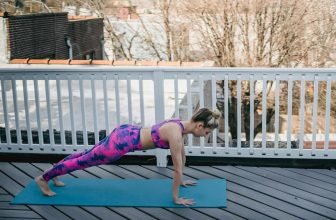
To start a safe and effective workout routine as a beginner, make sure to warm up properly with dynamic stretches and light cardio. Choose exercises that match your fitness goals and level, focusing on proper form and starting with bodyweight movements. Progress slowly, listening to your body, and adding challenges gradually. Remember to rest and recover with rest days, active recovery, and quality sleep. Your fitness journey will benefit from these steps.
Importance of Proper Warm-up
To begin your workout routine effectively, always incorporate a thorough warm-up session to prevent injuries and prepare your body for exercise. A proper warm-up increases your heart rate, improves blood circulation, and loosens your muscles, reducing the risk of strains or sprains during your workout.
Start with dynamic stretches like leg swings, arm circles, and hip rotations to gradually increase flexibility and range of motion. Engaging in light cardio activities such as jogging in place or jumping jacks for 5-10 minutes raises your body temperature and primes your cardiovascular system for more intense exercises.
Additionally, including activation exercises specific to the muscle groups you plan to target helps to activate and engage those muscles, improving overall performance and reducing the likelihood of muscle imbalances. Remember, a good warm-up should mimic the movements you'll perform during your workout but at a lower intensity.
Choosing the Right Exercises
Select exercises that target your specific fitness goals and cater to your current fitness level to maximize the effectiveness of your workout routine. For beginners, focusing on compound exercises that work multiple muscle groups simultaneously can be highly beneficial. Squats, lunges, push-ups, and rows are excellent choices to build overall strength and coordination. Incorporating cardiovascular exercises like jogging, cycling, or jumping rope can help improve endurance and burn calories.
It's crucial to pay attention to proper form to prevent injuries and ensure maximum effectiveness. If you're unsure about how to perform certain exercises correctly, consider working with a certified personal trainer or watching instructional videos online. As a beginner, start with bodyweight exercises before gradually incorporating weights to avoid overwhelming your muscles. Additionally, don't forget to include flexibility exercises such as yoga or stretching to improve range of motion and prevent stiffness.
Progressing at a Safe Pace
Ensure that you gradually increase the intensity and duration of your workouts to progress safely and effectively. Pushing yourself too hard too fast can lead to injuries and burnout. Start by adding a few extra minutes to your workout or increasing the weight incrementally. Listen to your body; if you feel excessively fatigued or experience pain, dial it back to prevent overtraining.
As you become more comfortable with your routine, consider adding new exercises or increasing the difficulty level. This could mean incorporating more challenging variations of movements you're already familiar with or trying completely new exercises to target different muscle groups. By continuously challenging yourself in a controlled manner, you'll see improvements in your strength and endurance over time.
Incorporating Rest and Recovery
Considering the importance of rest and recovery is crucial for maximizing the benefits of your workout routine. Giving your body time to recover is just as essential as the workout itself. When you exercise, you create small tears in your muscles, and it's during rest that these tears repair and grow stronger. Aim for 1-2 rest days per week to allow your muscles to heal and prevent burnout or overtraining.
Incorporating active recovery days, like gentle yoga or a light walk, can also help enhance circulation and reduce muscle soreness. Sleep is another vital component of recovery, as it's during deep sleep that your body releases growth hormone, essential for muscle repair and recovery. Aim for 7-9 hours of quality sleep each night to support your fitness journey.
Listen to your body – if you're feeling excessively fatigued, it's okay to take an extra rest day. Pushing through extreme tiredness can lead to injury and setbacks. By prioritizing rest and recovery, you set yourself up for long-term success in your fitness goals.
Conclusion
Now that you have learned the importance of proper warm-up, choosing the right exercises, progressing at a safe pace, and incorporating rest and recovery into your workout routine, you're ready to start your fitness journey with confidence.
Remember to listen to your body, start slow, and gradually increase intensity. Consistency is key, so keep pushing yourself while also giving your body the rest it needs to recover and grow stronger.
You've got this!




